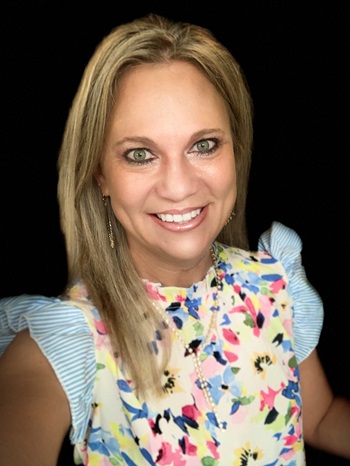
ProFrac and Intelligent Wellhead Systems’ MQTT protocol promises to speed up communications at the frac site, not only by saving costs but laying the foundation for future technological innovations and efficiencies in the field. (Source: Shutterstock.com)
The oilfield is an expensive place, with E&Ps constantly searching for efficiencies and ways to trim LOE.
Time is money, the aphorism goes, and ProFrac and Intelligent Wellhead Systems (IWS) are doing what they can to save both—starting with the efficient transfer and visualization of wellsite data during hydraulic fracturing operations.
The companies’ offering, MQTT (Message Queuing Telemetry Transport) is a lightweight, publish-subscribe based messaging protocol designed for internet of things (IoT) applications. The messaging system is built to ensure efficient data transfer even in resource-constrained devices and low-bandwidth, high-latency or unreliable networks.
MQTT protocol streamlines the information transfer process for operators and their customers, cutting out the "manual set garbage” required with traditional methods of communication, Chris Hall, director of application development at ProFrac, told Hart Energy.
“The reason it’s awesome is because I get less phone calls from the field telling me stuff isn’t working,” Hall said.

Garbage out
The “garbage” Hall is referring to is one of the biggest drawbacks with the traditional method.
Currently, wellsite data is transmitted during fracturing operations by a standard communications cable using CSV (comma separated value). While this method is robust, it is quite limited in what it can do, particularly with changes in the data being transmitted, said Bob Duncan, vice president of product strategy at IWS.

When using the CSV protocol, data is not sent at the start of the stage and channels are often not in the right order during set up.
“Right now, when they send it over through serial comms, it’s commonly referred to as just a CSV stream,” Duncan told Hart Energy. “There’s no metadata with it. So you just have a series of numbers, a comma and another series of numbers, a comma and another series of numbers.”
This can pose some problems. Upon receiving the data, IWS must manually map each channel based on a list provided by the operator. If this list changes or mappings are lost, it becomes difficult to track when changes occurred or if data was altered during workflow processes.
ProFrac and IWS’ new communication protocol presents many advantages over the current method, the companies said.
With MQTT, many variables are taken out of the equation. Not only is the mapping process simpler, but it’s also completed before the job starts.
All data, measured, calculated and captured by wellsite sensors is fed into ProFrac’s MQTT broker. A third-party interface, adapted to work with the MQTT broker, communicates via MQTT to IWS’ inVision Wellsite system, which translates the data to the IWS standard data model. The data is then transferred to the inVision Live Cloud, where it is available to the operator at locations both onsite and remote. The burden of channel mapping and data manipulation during the job is removed from the data van operator, saving companies time and money.
“They just start up their system, set it up how they would normally do, check a couple extra to-do boxes, and boom, everything just happens,” said Hall. “And on the IWS side, there’s no confusion about the pieces of data because they’re clearly labeled and their unit of measure is there, so you can see it and you know what it is ahead of time. It’s just a more straightforward process.”
MQTT protocol enables the transmission of diverse types of data, not limited to just tag names, including essential metadata such as units of measure and descriptive information. The process of manually entering, changing or quality checking data is eliminated.
The enhanced data quality adds confidence in downstream operations and enhances the interpretation of received values, providing deeper insights into the data being transmitted, Duncan said. Added trust between the operator, the service company and the aggregator company bring new levels of assurance and added safety to wellsite operations.
Despite the obvious benefits that the MQTT protocol provides, it is still not the primary method of communication, simply because the serial comms and CSV approach has been around since the 1960s. The older process is easy to use, but its ease of use makes it that much easier to screw up, said Hall.

For MQTT to become the main approach for fracking operations, operators must convince other service providers to follow their lead, according to IWS.

“The operator has to really own pushing the other service providers on their frac pad to use the same protocol,” Tracy Gray, vice president of strategy and marketing for IWS, told Hart Energy.
Using a standard protocol will make communication easier for everyone involved in the operation, Gray said.
So far, IWS and ProFrac have successfully deployed the MQTT protocol on two two-well pads in the Haynesville Shale and a three-well pad in West Texas. An additional three-well pad in the Haynesville is also ongoing. The MQTT protocol is now part of ProFrac’s basic software suite, so it will be deployed to every single fleet we run, said Hall.
As the industry pursues greater efficiencies, effective communication is the crucial first step to automating processes and improving communication among various onsite vendors and service providers, Duncan said. Establishing robust communication protocols like MQTT will lead to enhanced data quality, alleviating initial concerns and fostering increased collaboration among onsite service providers.
“Ultimately, it comes down to ‘How do we more quickly iterate through improvements to our operations?’ Having a reliable protocol like [MQTT or something similar is going to play a big role in enabling [the] future,” Duncan told Hart. “‘What [do] completions look like in the future?’ You need a decent comms protocol in order to be able to do that or achieve any of those goals.”
Recommended Reading
Comments
Add new comment
This conversation is moderated according to Hart Energy community rules. Please read the rules before joining the discussion. If you’re experiencing any technical problems, please contact our customer care team.
